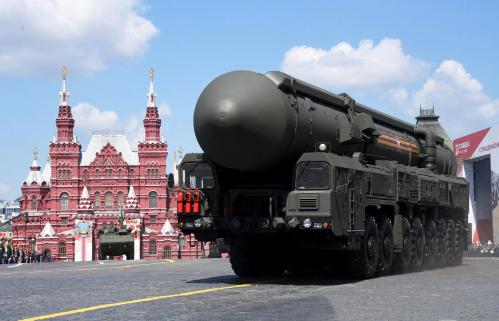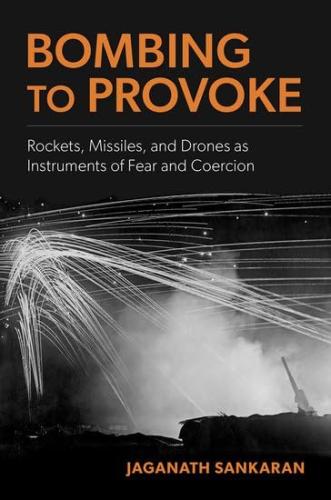What a difference three decades make. On November 4, 1979, an Iran suffused with revolutionary passions and resentment of American interference in its politics seized the U.S. Embassy in Tehran, igniting a 14-month hostage crisis that consolidated the power of its revolutionary theocracy and ruptured the country’s long alliance with Washington. Thirty years later, the tables have turned almost completely, as the nascent opposition to the Islamic Republic launched a new round of protests to coincide with the regime’s annual rallies celebrating the anniversary of the embassy seizure.
The opposition demonstrations appear to have been relatively small and readily repressed by the regime’s steadfast shock troops, but their chants of “Death to dictators” provided a powerful rejoinder to the anti-American sloganeering that is the usual fare for official events in the Islamic Republic. Moreover, the persistence of the protests and the endurance of the opposition movement more broadly suggest that Iran’s internal crisis, which erupted over the contested outcome of its June 12 presidential elections, is nowhere near an end.
Iran’s revived unrest comes on the heels of Tehran’s apparent about-face on an initial agreement with the international community to export its low-enriched uranium (LEU), a deal which would have at least temporarily abated some of the urgency surrounding the regime’s nuclear activities. In a speech yesterday, Iran’s Supreme Leader, Ayatollah Ali Khamenei, angrily denounced the dialogue with Washington and disparaged the Obama administration’s policy of engagement as deceptive and insincere. His speech, along with recent statements by Revolutionary Guard commanders and orthodox defenders of Iran’s Islamic system, signaled an even fiercer pugnacity to the regime’s domestic opponents.
The net result of Khamenei’s vitriol, the diplomatic rebuff on the LEU deal and the continued repression at home suggests that Iran’s leadership has shifted even further to the right in the months since Iranians greeted the reelection of President Mahmoud Ahmadinejad with massive protests. Moreover, the erratic course of Iranian policymaking in recent weeks – in particular, Iran’s nuclear diplomacy has vacillated from unprecedented pliability to predictable obstinacy – raises the question of whether the elite power struggle is eroding the regime’s ideological coherence and bureaucratic competence. Both developments will pose real challenges for the Obama administration and for the international community in formulating a strategy that can succeed in blunting or moderating Iran’s nuclear ambitions.
With respect to Iran’s internal dynamics, the latest demonstrations attest to the creativity and subversive tactics of the opposition, which has adopted the moniker “the Green Path.” Faced with a ban on demonstrations that is ferociously enforced, Iran’s Green movement has made a virtue of necessity in order to sustain its public profile by co-opting the rituals, pageantry and propaganda of the revolution that brought the regime to power. This strategy has included hijacking Islamic symbolism and even the specific rhetoric of the mobilization that led to the 1979 revolution. In the same vein, the opposition has utilized religious rites — including the 40th-day commemoration of the death of the young woman shot while protesting the election in June — as well as revolutionary celebrations, such as today’s events and the regime’s annual September rallies to denounce Israel, as powerful mechanisms for discrediting a revolutionary theocracy. This approach has obvious symbolic value and amplifies the value of what have been relatively small-scale events for boosting the Green Path’s organization and momentum.
The persistence of the protests also vindicates the importance of Iran’s much-maligned reform movement, which pressed unsuccessfully for change from within the Islamic system in the late 1990s under the presidency of Mohammad Khatami. Indeed, the investment in incremental change and its subsequent failure, has proven critical in cultivating both the leadership of the opposition movement, and the broader popular willingness to confront the regime than previous existed in Iran. By beginning a conversation about the source of legitimate ruling authority, Iran’s reformers revived the country’s century-old enthusiasm for revolutionary rule.
Today’s anti-regime protests represent a natural extension of that discussion and no one grasps that more clearly than Khamenei and the hard-liners. Their suppression of the reformists’ modest ambitions in the 1990s, and their abnegation of the votes of Musavi supporters more recently, were underpinned by trepidations that even gradual reform would beget revolution. In fact, it is more likely that just the opposite is the case; the reaction to reform has unleashed dynamics that will eventually culminate in the demise of the absolute authority of Iran’s unelected theocratic leader.
However, at least as far as an outside observer can gauge, that eventuality remains a long-term prospect for Iran. The Green movement remains largely amorphous; its current leadership comprises moderates who cannot abandon the system that has nurtured them for the past three decades, its partisans have divergent objectives and its strategy for overcoming the regime’s entrenchment is unclear. Moreover, the regime has largely succeeded in deterring all but the most committed oppositionists from going to the streets through a harsh crackdown. Still, the long-term trend is unmistakable today — the fury vented a generation ago against America has ricocheted to target its proponents. Revolutionary Iran’s founder, Ayatollah Ruhollah Khomeini, trumpeted that the hostage crisis had brought America “to its knees” and his successor Khamenei echoed those words in his recent speech. The fallacy is unmistakable. Instead, eventually, the forces wrought by the Islamic Republic will represent its own undoing.


Commentary
The Iran Hostage Crisis: 30 Years Later
November 4, 2009